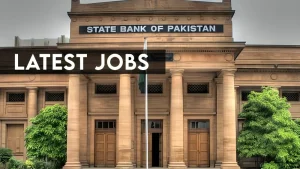Islamabad, July 24, 2025 – The PKR (Pakistani Rupee) may breach 300/USD by end of 2025 as the economy slides down a rough road. Analysts and data suggest that it could slide past 300 against the US Dollar by the end of this year.
Economic pressures from hefty debt repayments, rising import costs, and lingering uncertainties are piling on the strain. Right now, the rupee’s holding at around 285 in the interbank market, but some experts see it tumbling as far as 330 if things don’t turn around.
A Fragile Exchange Rate
Just a few days ago, on July 21, the rupee closed at 284.95 against the dollar, nudging up slightly from 284.87, according to local market chatter. But don’t let that tiny gain fool you—bigger trouble might be brewing. The International Monetary Fund has pegged the exchange rate at 328.4 for the 2024–25 fiscal year, and economist Dr. Hafeez Pasha has pointed to an IMF estimate of 330 by June 2025. The culprits? Low foreign reserves, a mountain of debt, and an economy that’s struggling to find its footing.
Debt and Dwindling Reserves
Pakistan’s on the hook for a staggering $20–25 billion in external debt payments in the 2025–26 fiscal year, covering both principal and interest. The State Bank of Pakistan’s reserves are sitting at $10.3 billion as of April 2025, up slightly from $9.4 billion last June, but that’s barely enough to cover two months of imports.
Countries like China, Saudi Arabia, and the UAE have been good about rolling over loans in the past—they hold 85% of Pakistan’s external debt. If rolling stops, the rupee could take a bigger hit.
IMF Talks and Tough Choices
Pakistan’s got a $7 billion Extended Fund Facility deal with the IMF, signed last July, and they just cleared the first review in May, unlocking $1 billion. But the road ahead isn’t smooth. More funds depend on tough conditions—think devaluing the rupee, hiking taxes, or raising energy prices. If those talks stall or the government drags its feet on reforms, markets could get jittery. “It’s all about sticking to the plan,” a Karachi-based trader, said. “If we slip up, the rupee’s going to feel the pain.”
Inflation Cooling, Rates Dropping
Here’s a bit of good news: inflation’s come way down, hitting a low of 0.3% in April 2025, a far cry from the 38% peak back in May 2023. The State Bank’s tight policies helped, but they’ve also slashed the policy rate by 11 points since June, bringing it to about 11%. Businesses are clamoring for even lower rates to kickstart growth, but analysts warn that cutting too soon could send the rupee spiraling by spooking investors.
Trade Gaps and Remittance Woes
Last year, import curbs and steady remittances kept the current account deficit in check at $665 million, down from $3.3 billion the year before. But with restrictions easing, imports are creeping up, and the trade gap’s likely to widen. Remittances are a lifeline—$918 million in dividends alone flowed in last May—but informal channels like hawala are eating into those numbers. When black-market rates beat official ones by Rs5–10, people are tempted to skip the banks.
Black Market Blues
Speaking of the black market, the gap between official and open market rates is still a headache. The IMF says this spread has narrowed recently, but speculation and dollar hoarding persist. Government crackdowns haven’t fully stamped out the problem, and overseas Pakistanis are increasingly turning to informal channels, which puts even more pressure on the rupee.
Political and Global Headwinds
Politics isn’t helping. The uncertainty since last February’s elections, plus delays in naming permanent heads for the State Bank and Federal Board of Revenue, is making investors nervous. Add to that a stronger US dollar and rising global interest rates, and emerging markets like ours are feeling the squeeze. Tensions in the Middle East could also mess with oil prices and remittances, two things Pakistan can’t afford to lose.
What’s Next?
The government’s banking on IMF funds, help from friendly countries, and a boost in exports to keep the rupee afloat. But analysts aren’t so optimistic. “If we don’t lock in financing soon and stay the course on reforms, 300 could just be the start,” a Lahore currency trader said. With some projections pointing to 330 or worse, Pakistan’s got to play its cards right to avoid a steeper slide.









